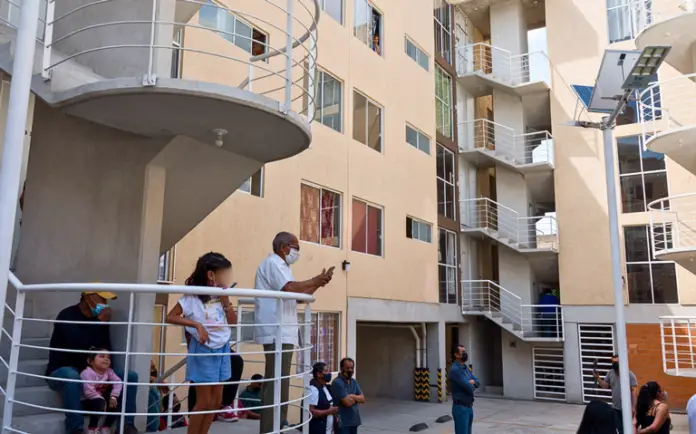
The housing need for 2030 in the Metropolitan Zone of the Valley of Mexico (ZMVM) will be 148,489 spaces, due to the demographic change in cities, where year after year single-person households grow and marriages decrease, said Pablo Benlliure, academic and master in urban planning at UNAM.
The specialist pointed out that there is a trend towards smaller households, because the income of their members is lower. Even in Mexico City, single-family places went from occupying 10.49 percent of homes to 21.06 percent in 2020 and are expected to grow to occupy 32.12 percent of homes.
In the framework of the Housing Laboratory, of the Graduate Program in Architecture of the UNAM, the academic explained that, according to estimates made with data from the National Housing Commission and the Inegi, the State of Mexico is the entity that will have the greatest need for housing in the next six years, with 95,130 spaces, followed by Mexico City, with 95,130.
There is one care space for every 4,000 senior citizens in CDMX
In Hidalgo, considered part of the ZMVM, they estimate that the need for housing will be 9,070 properties.
Regarding the municipalities that will have the greatest requirements, Tecámac, in the State of Mexico, is the one that projects the greatest need by 2030, with 114,421 spaces; followed by Zumpango, in the same entity, with 81,787. While in Mexico City, the municipalities with the greatest demand will be Iztapalapa, with 52,960 homes; Benito Juárez, with 55,819, and Miguel Hidalgo, with 43,160 homes.
Benlliure said that, given the change in the formation of households, different housing policies must be considered to meet the needs of the inhabitants. For example, there is a downward trend in households made up of male-female couples, which in 2010 occupied 62.12 percent and, for projections to 2030, are expected to drop to 24 percent.
In the ZMVM, the expert indicated, there is no affordable housing due to increasingly high land prices. If the upward trend is not modified, the growth of land prices in Mexico City will remain above 20 percent annually, directly impacting housing prices.
In the first quarter of 2022, average prices ranged from six thousand to 336 thousand pesos per square meter. With this criterion, the average price of housing for sale in the capital is over five million pesos.
He explained that in Mexico City the supply of affordable housing is limited for those with low and medium incomes: 75.4 percent of housing is only accessible to high incomes and 24.6 percent to medium incomes.
Something similar happens with used or rental housing, since 80.8 and 84.4 percent, respectively, have their offer directed to high incomes.
In the State of Mexico, he explained, the situation is even more critical, because 82.2 percent of the supply of new housing is intended for high-income people, 17.4 for medium incomes and there is no supply for those with low incomes.
“Affordable housing is housing so that, at all income levels, they do not have to spend more than 30 percent of their income (…). The price of land is growing in a terrible way,” he said.
Source: elsoldemexico






